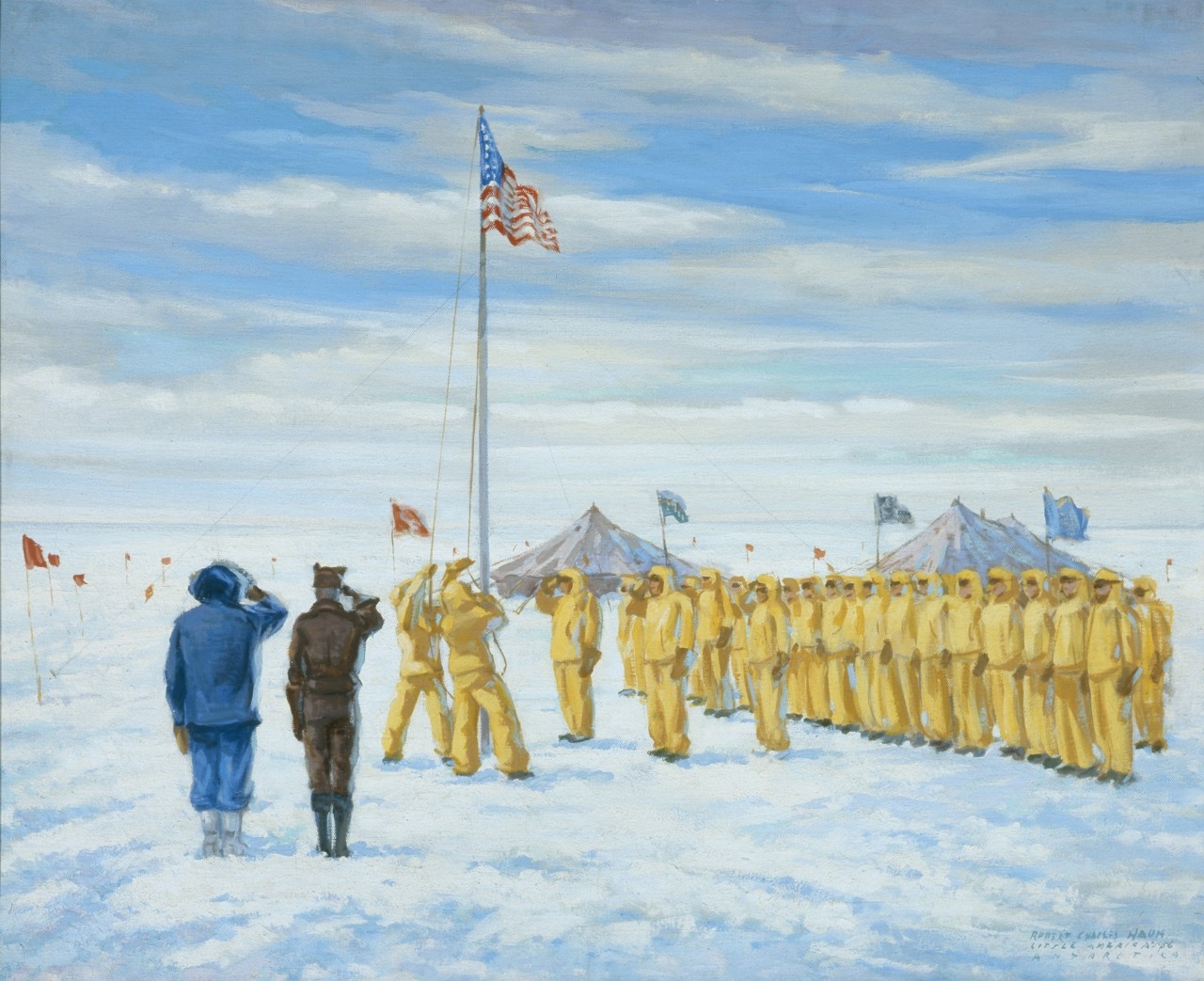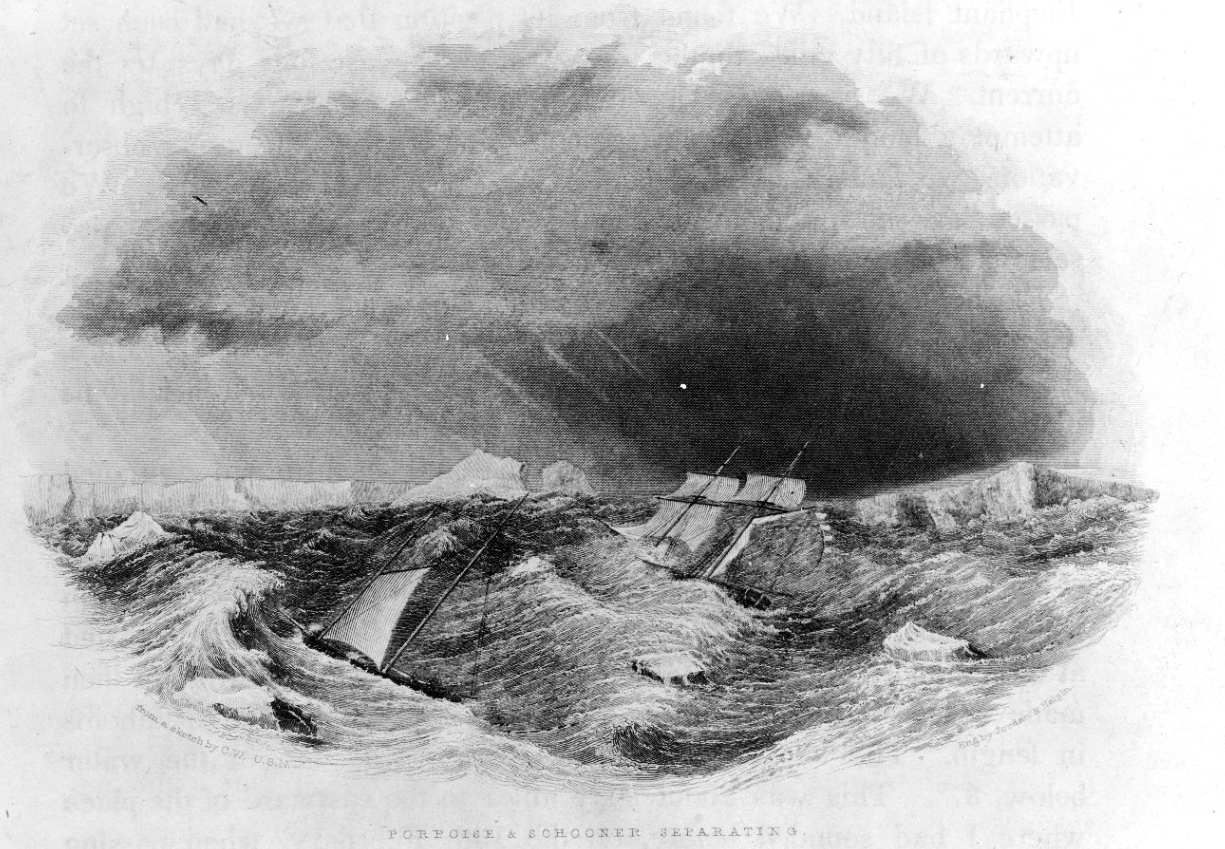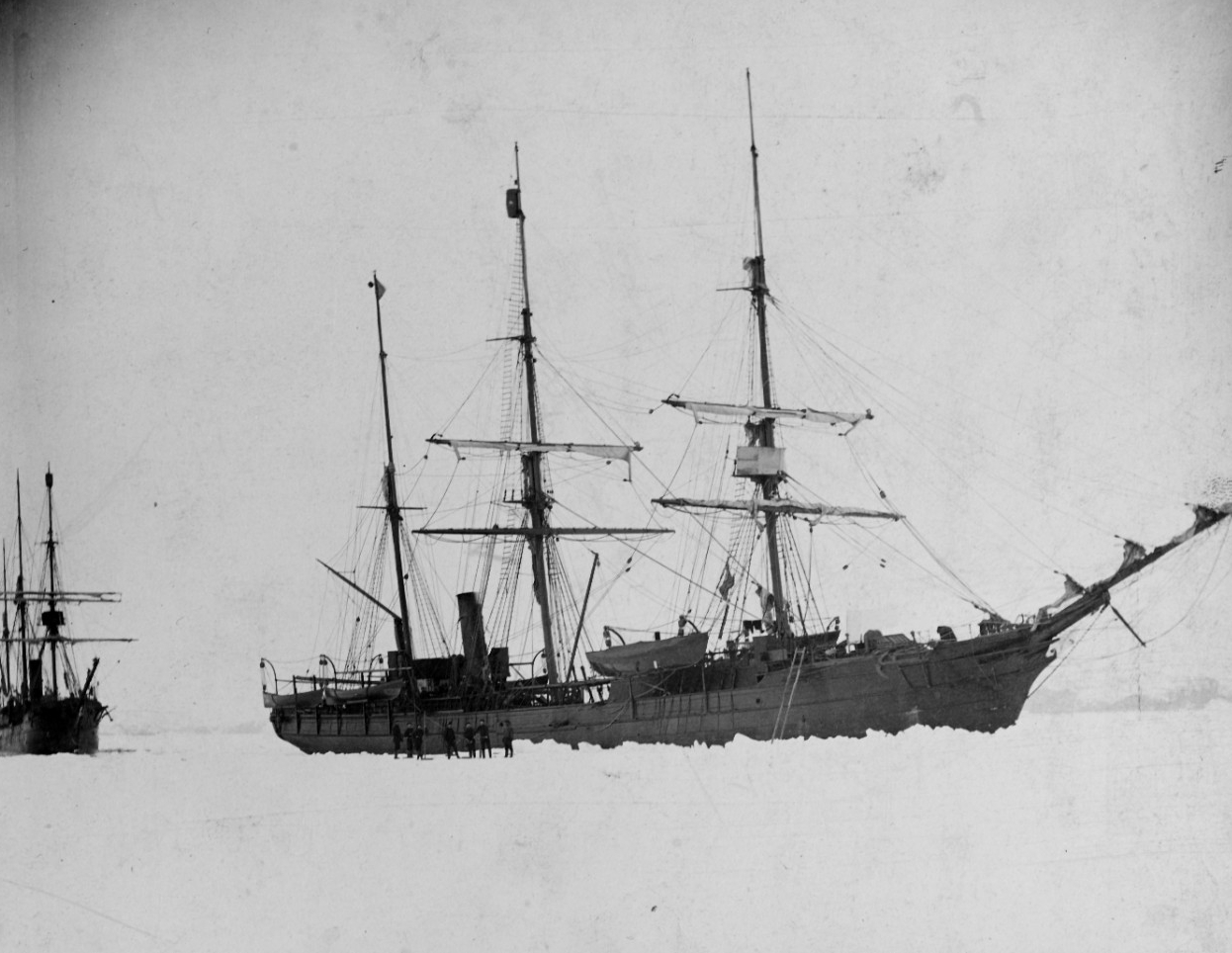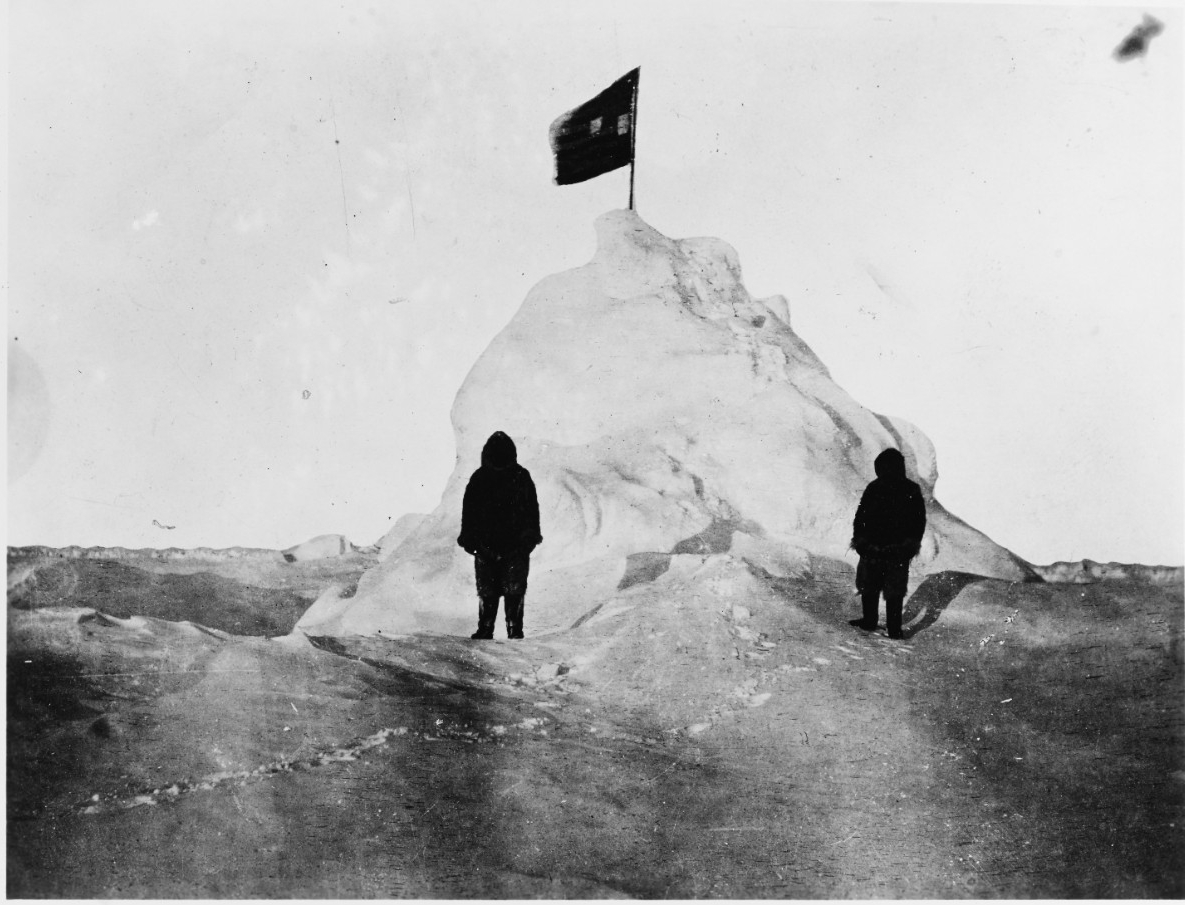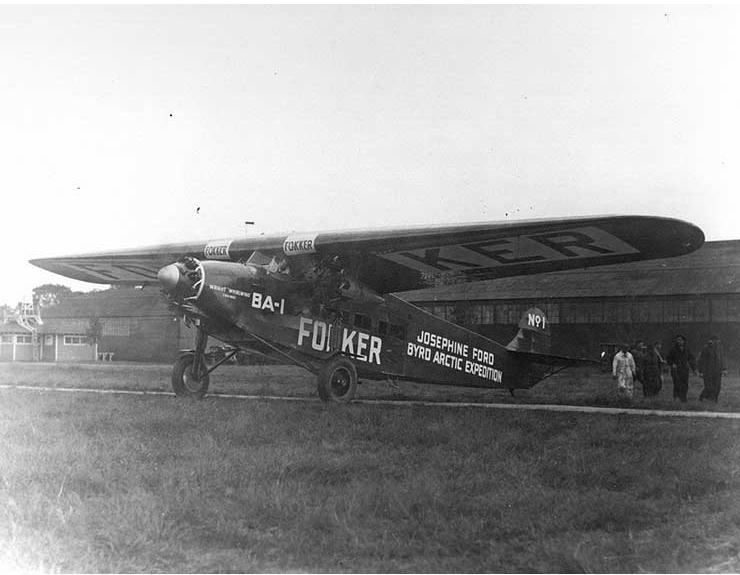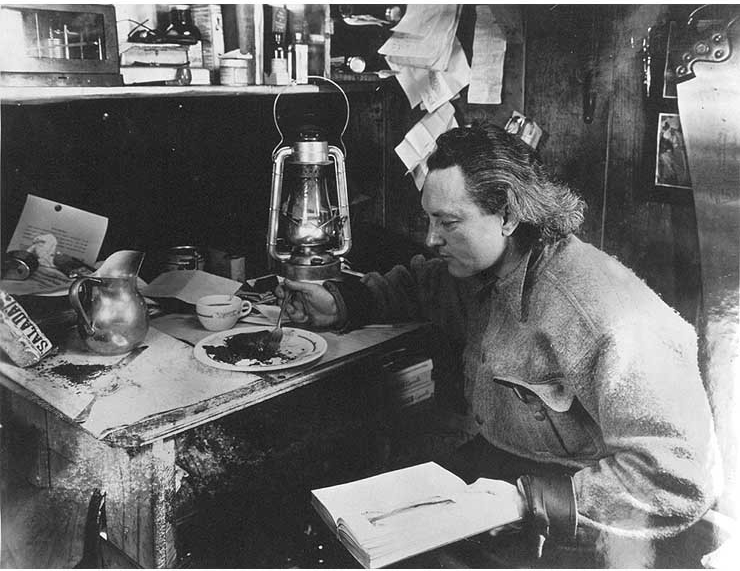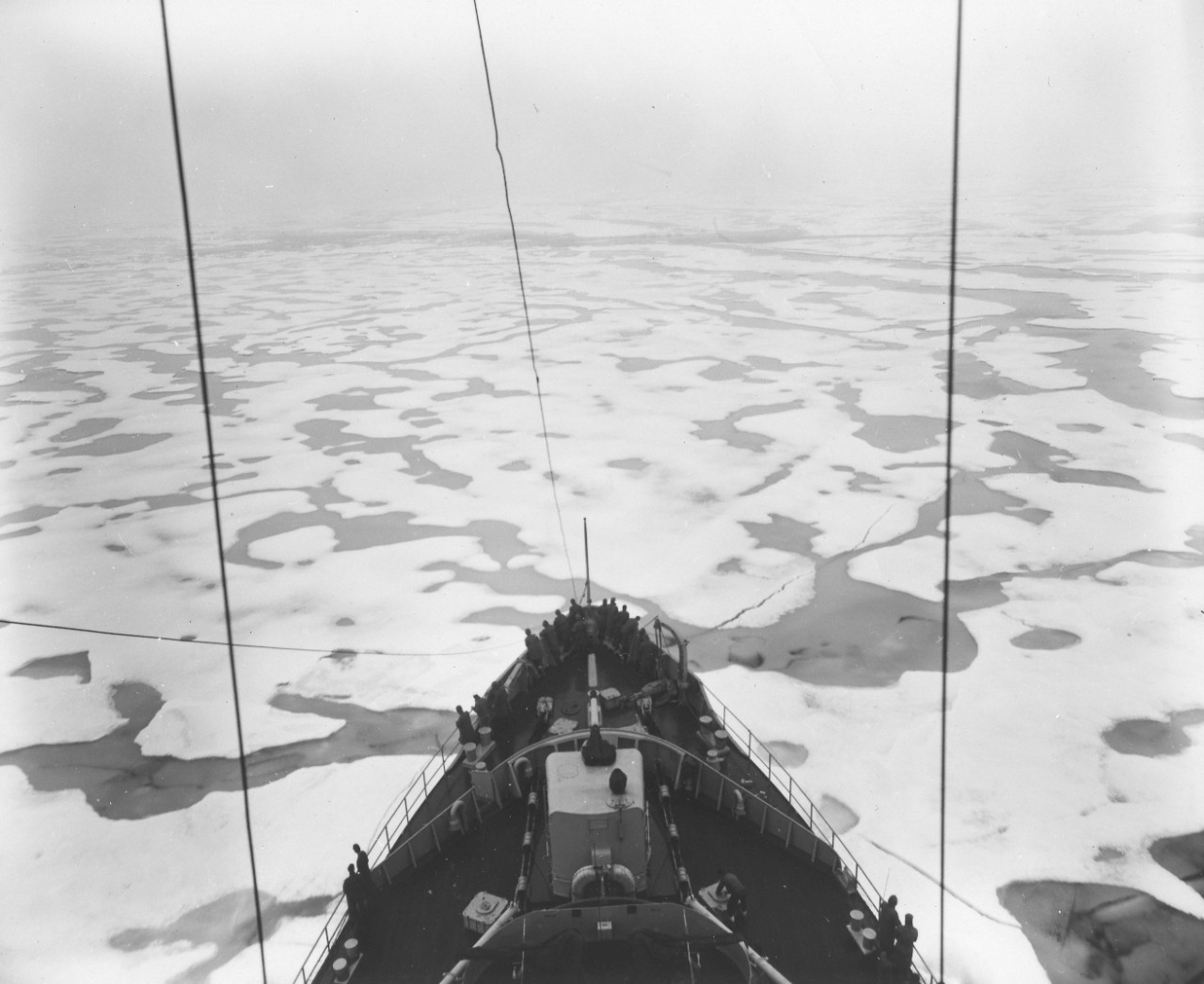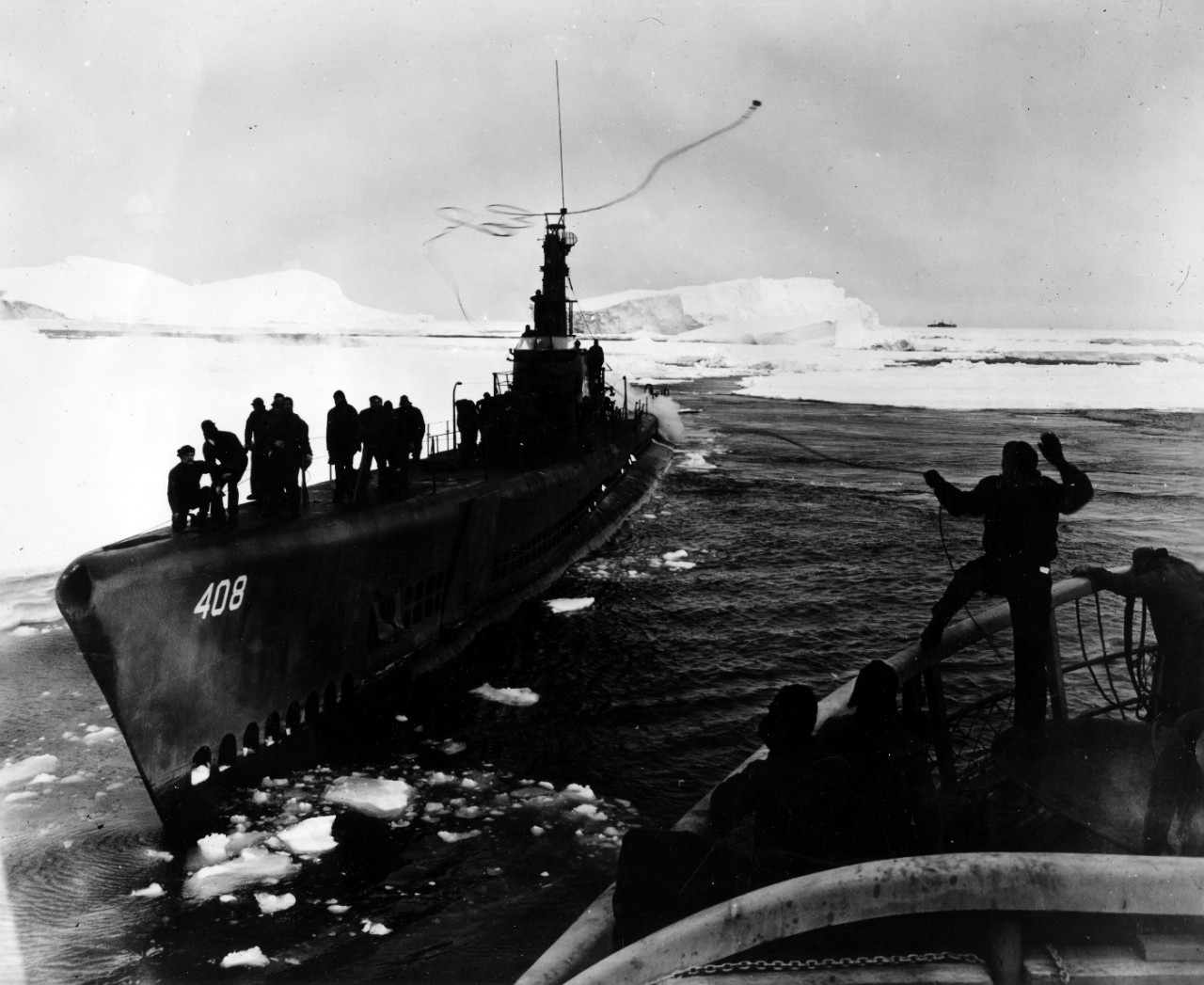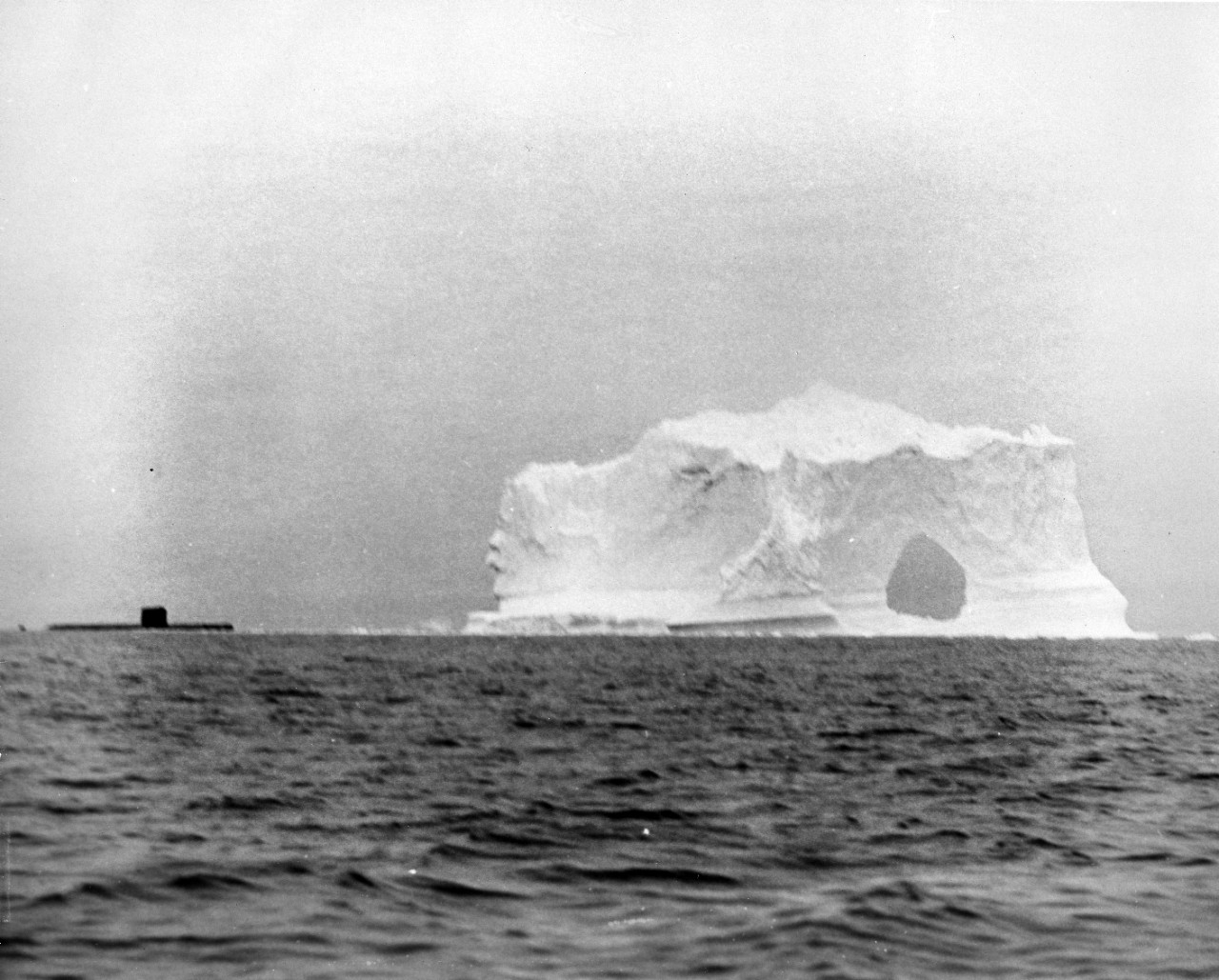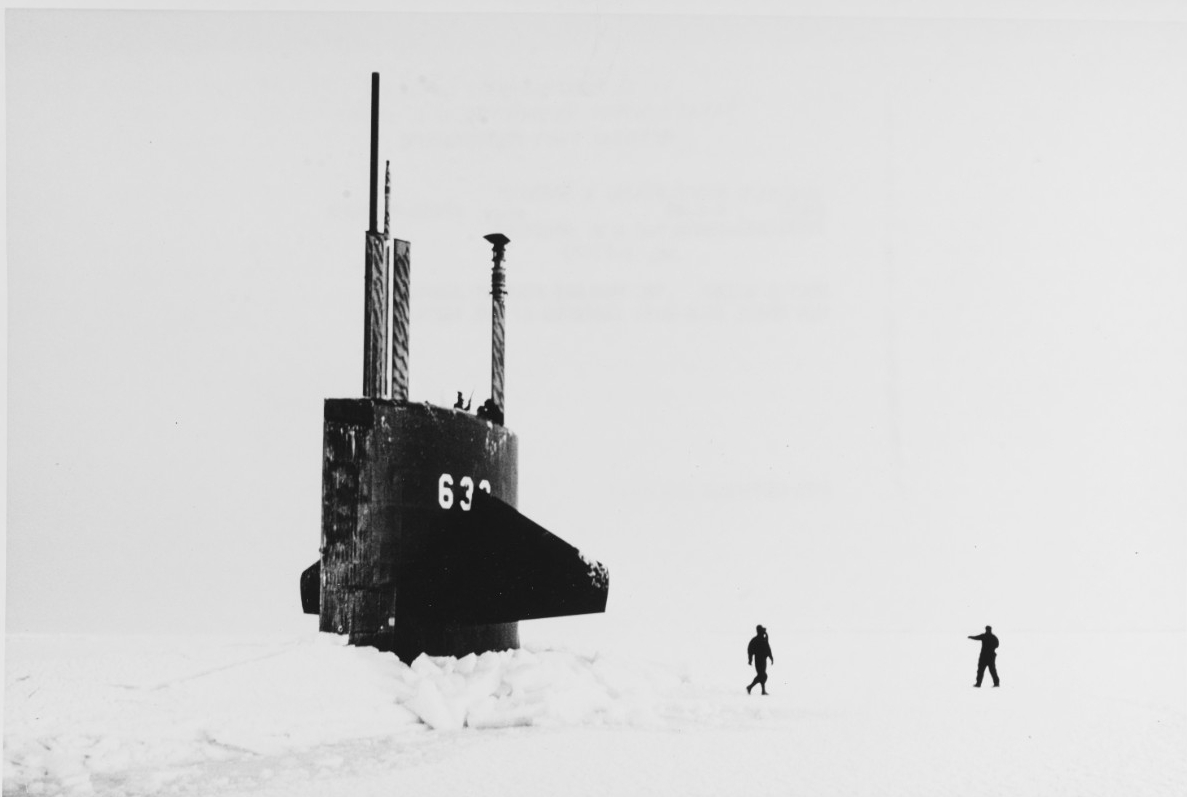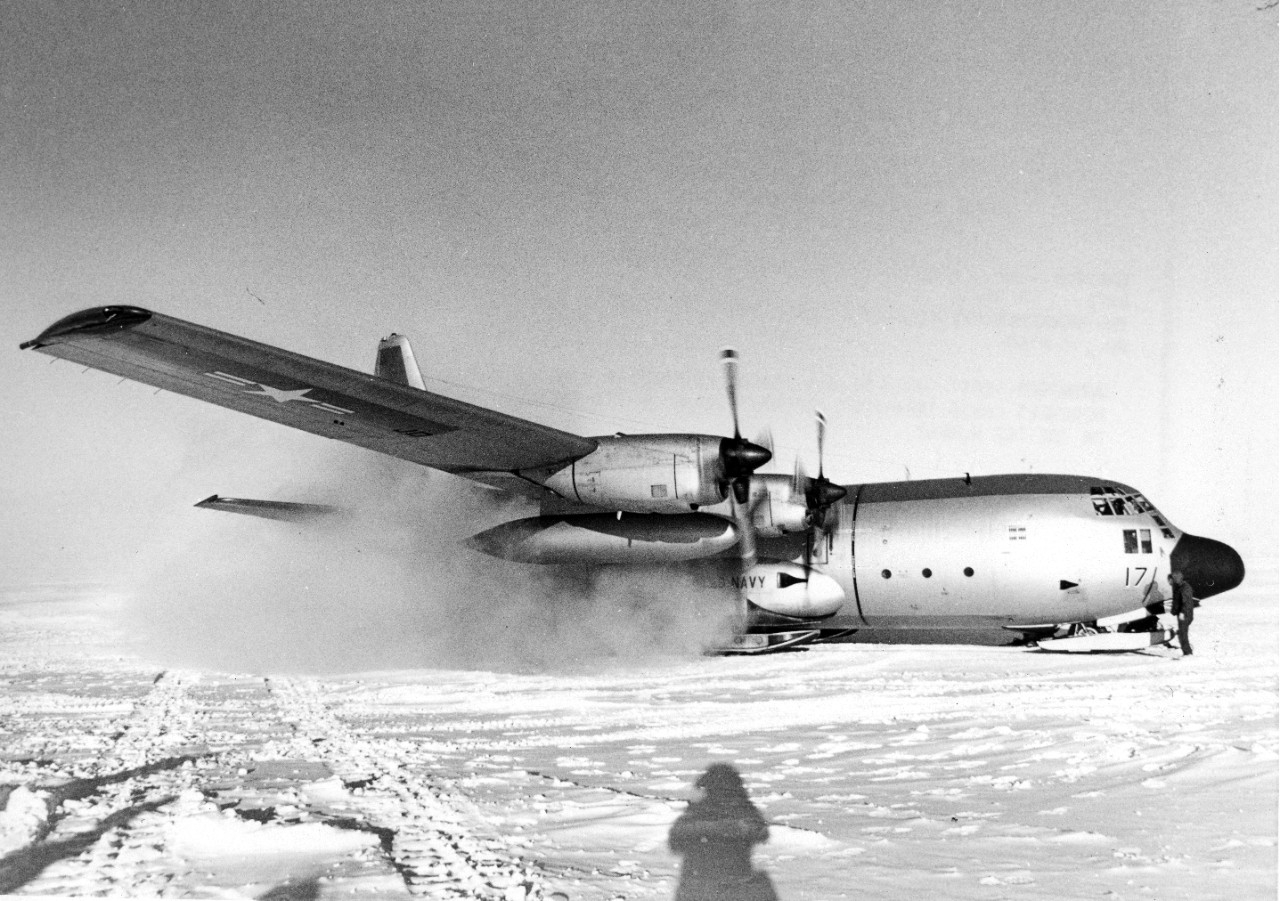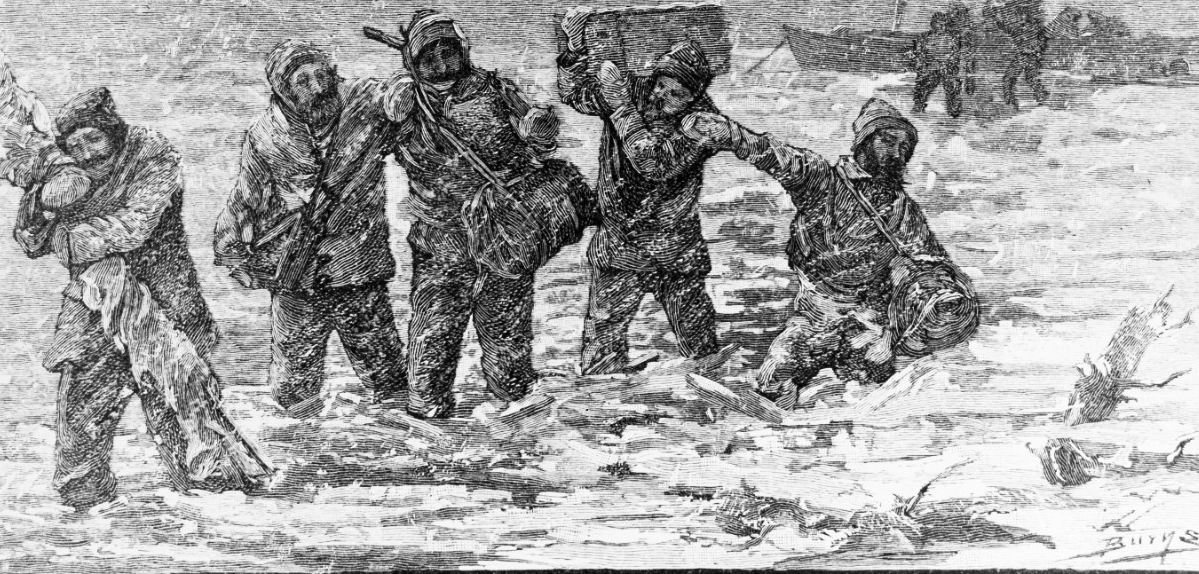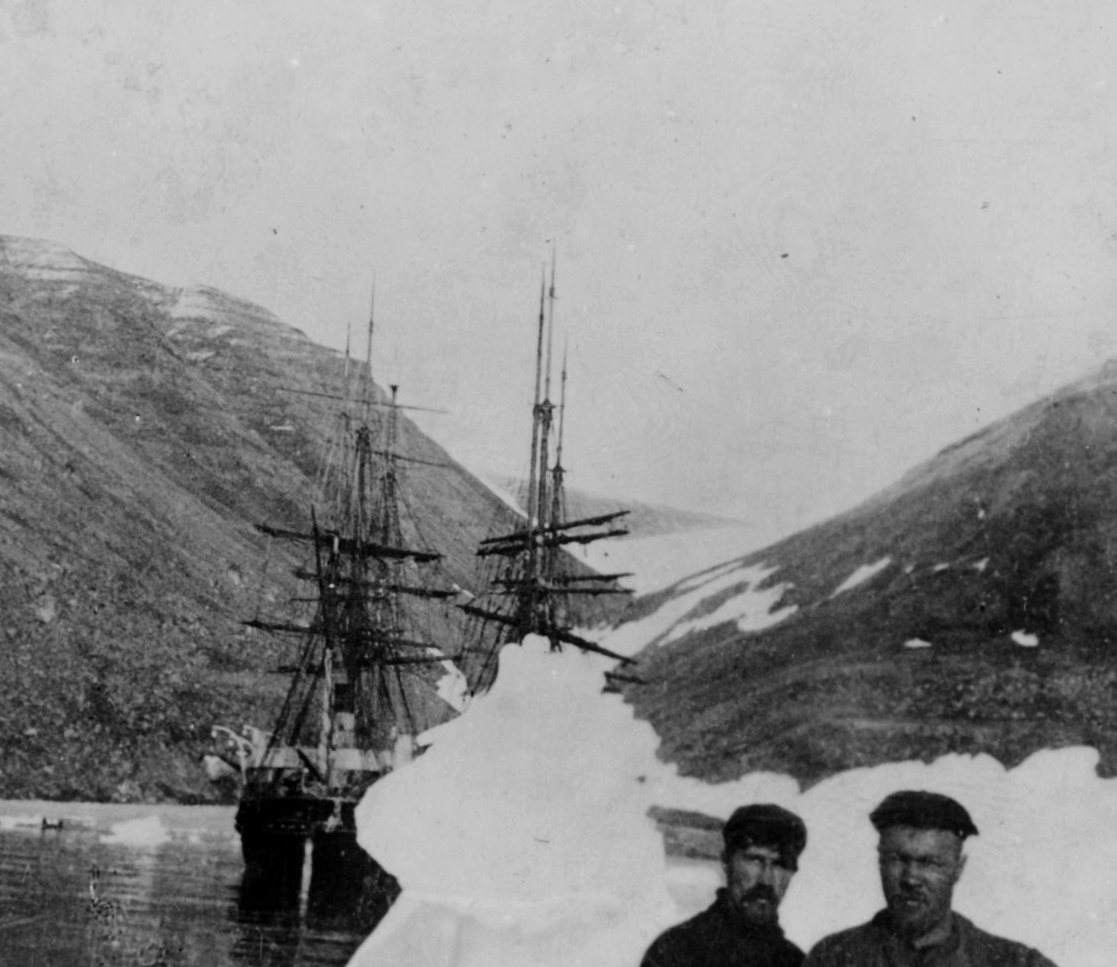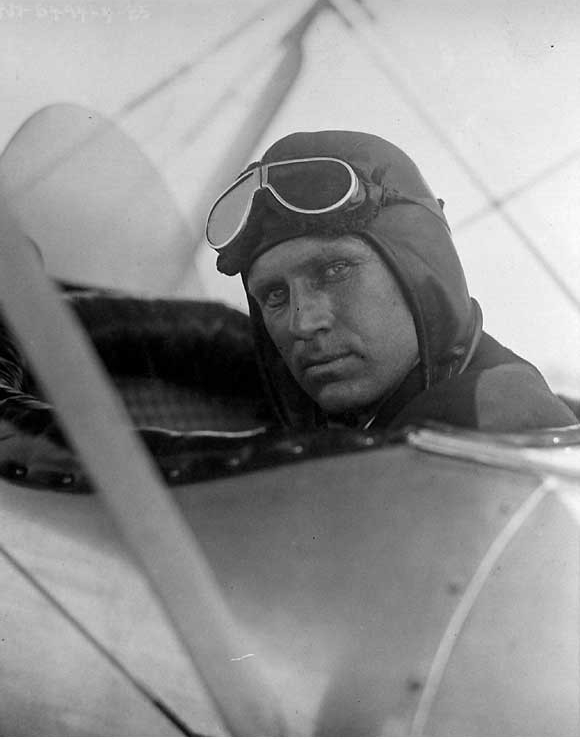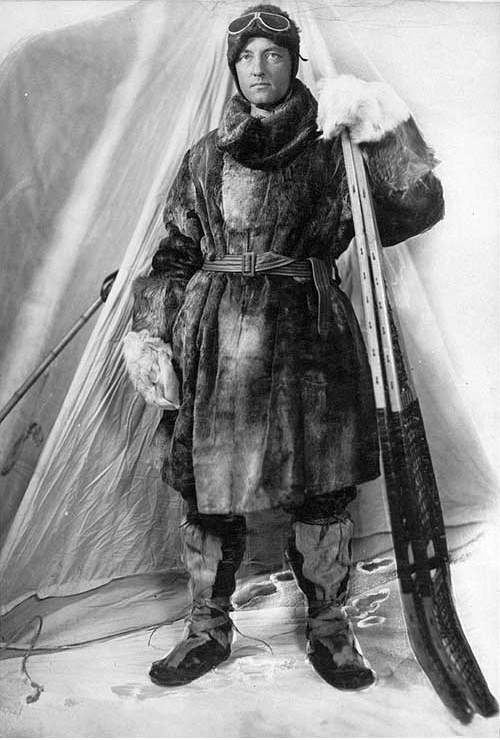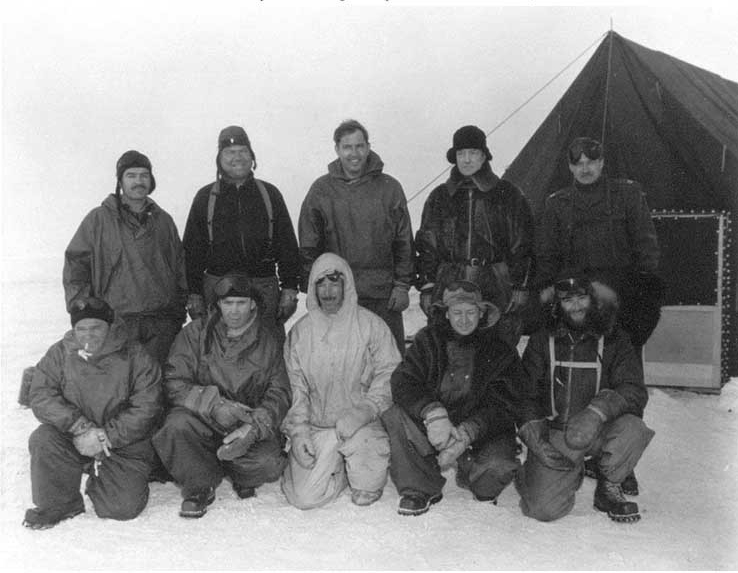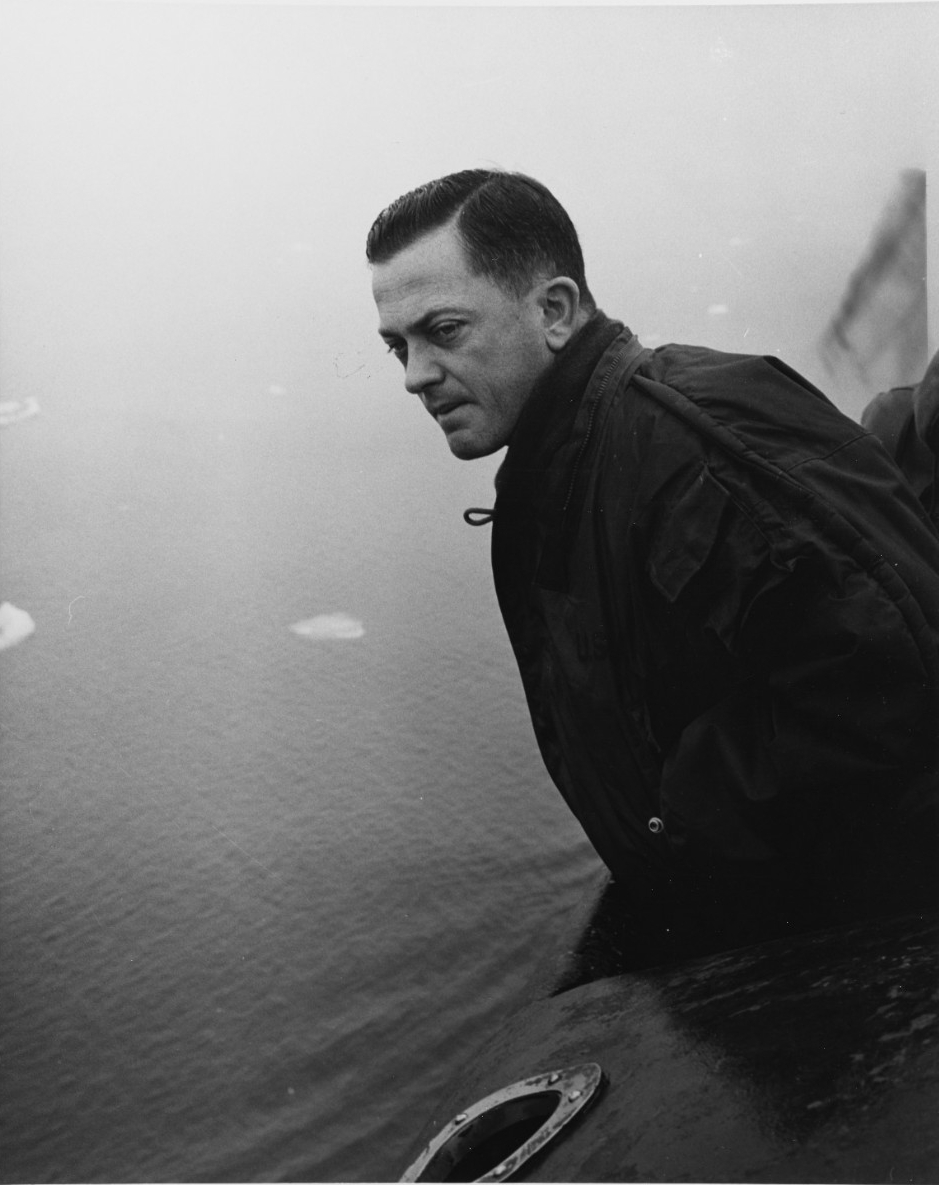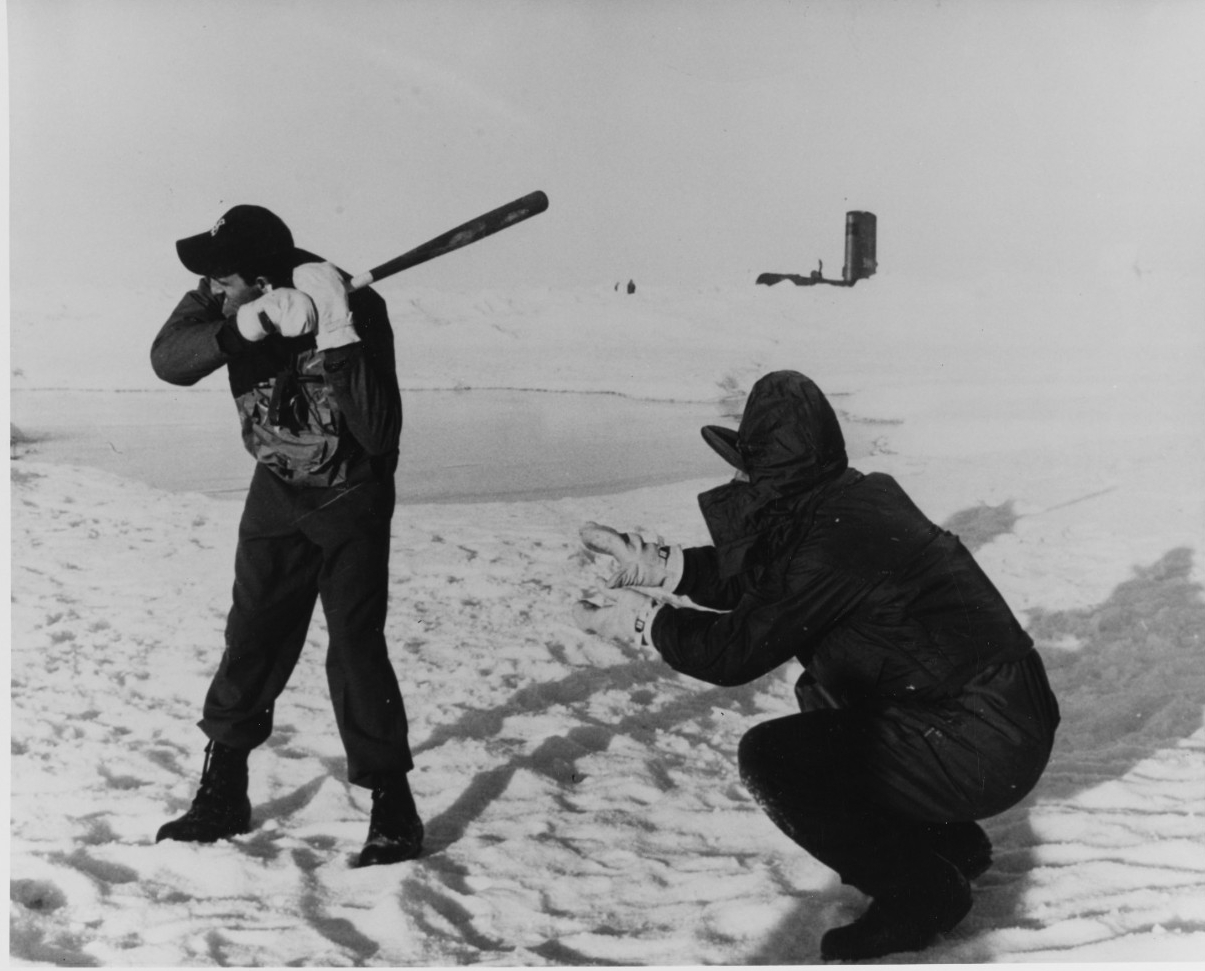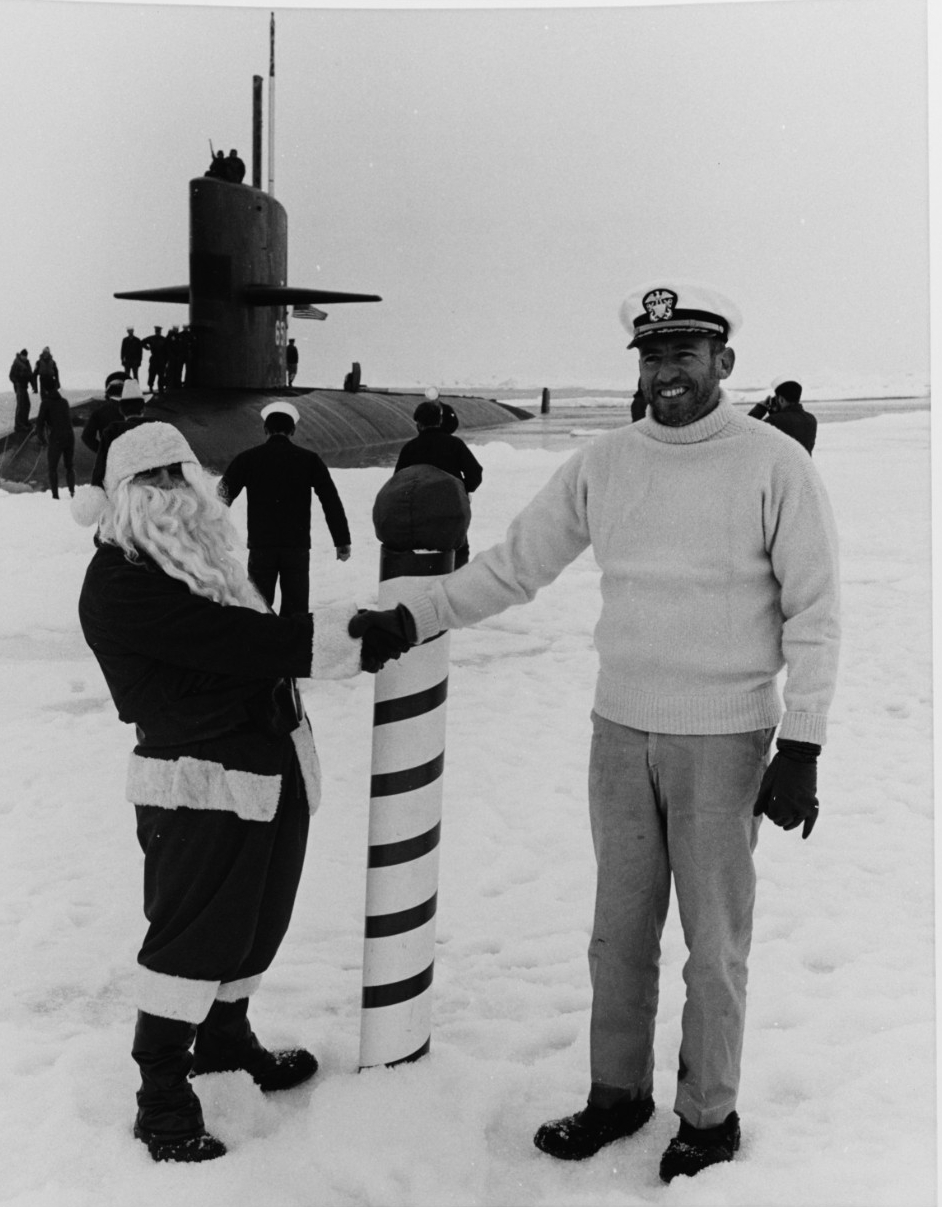Polar Exploration
Formal commissioning ceremony for Little America V. Admirals Richard Byrd and George Dufek salute the flag before the men of the Mobile Construction Battalion's Honor Guard. Admiral Byrd is on the right. Painting, oil on canvas; by Robert Charles Haun; 1956; unframed dimensions 24H X 30W. Accession#: 88-192-F.
The U.S. Navy has a long history in polar exploration. As early as 1839, Captain Charles Wilkes led the first U.S. naval expedition into Antarctic waters. In the early 1900s, Admiral Richard E. Byrd established an Antarctic naval base known as Little America I, led an expedition to explore further inland, and conducted the first flight over the South Pole. From 1934–35, the second Byrd Expedition explored much further inland, and the third expedition by Byrd in 1940 charted the Ross Sea.
After World War II, Byrd was instrumental in the Navy’s Operation Highjump that charted most of the Antarctic coastline. In 1948, Commander Finn Ronne led an expedition that photographed more than 450,000 square miles by air. Then in 1954–55, the icebreaker USS Atka (AGB-3) made a scouting expedition for future landing sites and bays.
Operation Deep Freeze I would prepare a permanent research station and pave the way for more exhaustive research in later Deep Freeze operations. The expedition transpired over the Antarctic summer of November 1955 to April 1956. From 1957–58, a collaboration effort between 40 nations took place to carry out earth science studies from the North Pole to the South Pole and at points in between. The United States, along with Great Britain, France, Japan, Norway, Chile, Argentina, and the USSR agreed to go the South Pole—the least explored area on Earth. Their goal was to advance world knowledge of Antarctic hydrography and weather systems, glacial movements, and marine life. The U.S. Navy was charged with supporting the U.S. scientists for their portion of the studies.
On 9 June 1958, USS Nautilus (SSN-571) departed Seattle to conduct “Operation Sunshine.” The mission was to be the first submarine to make a fully submerged transit under the North Pole. After a first failed attempt, Nautilus departed Pearl Harbor on 23 July and successfully made it to the Bering Strait. The crew on Nautilus submerged under the icecap at Point Barrow, Alaska, surfaced briefly to photograph the area and find the sea valley in the ocean floor, and then on 3 August, Nautilus became the first to pass directly below the North Pole. The crew did not pause to convey the news until some 36 hours later when they surfaced in the Greenland Sea. President Dwight D. Eisenhower later awarded the Presidential Unit Citation to the commanding officer, Commander William R. Anderson, and the crew.
*****
Suggested Reading
- A Brief Timeline of Polar Exploration
- U.S. Geological Survey Scientific Activities in the Exploration of Antarctica: Introduction to Antarctica (pdf download)
- Atlas of the Narrative of the United States Exploring Expedition: During the years 1838–1842
- Change of Command Commander US Naval Support Force Antarctica—16 August 1985
- The Incredible Alaska Overland Rescue
- Polar and Arctic Policy, Expeditions, Explorations, Alaska & Bering Sea Patrols, and Polar Operations in the U.S. Coast Guard
- Polar Exploration: Primary Sources in the Manuscript Division
- Special and Commemorative Medals
- Antarctic Postal Procedures: Operation Deep Freeze—1985
- Submarine Force
- Naval Aviation
Operations
Notable People
Media
Artifacts
Art
Selected Imagery
United States Exploring Expedition commanded by Lieutenant Charles Wilkes, 1838-1842 Brig Porpoise (center) and schooner Sea Gull (left) separating in heavy seas, probably off Antarctica in March 1839. Engraving by Jordan & Halpin, after a sketch by Lt. Charles Wilkes, published in U.S. Exploring Expedition, Volume I, page 138. U.S. Naval History and Heritage Command photograph. Catalog#: NH 42639.
Fokker BA-1 Airplane "Josephine Ford" used by Lieutenant Commander Richard E. Byrd, USN, and Chief Aviation Pilot Floyd Bennett, USN, on their flight over the North Pole from Kings Bay, Spitzbergen, on 9 May 1926. BA-1 is presumed to indicate Byrd Arctic One. U.S. Naval History and Heritage Command photograph. Catalog#: NH 44161.
Rear Admiral Richard E. Byrd eating in his shack at Little America, Antarctica, circa late October 1934. He was rescued earlier that month from his advance base where he had been in isolation for a little bit longer than two months. This picture was taken before he had his hair cut. Collection of Mr. Amory H. Waite. U.S. Naval History and Heritage Command photograph. Catalog#: NH 105372.
Ship steaming through icy waters in 1940s–50s. Though unidentified, it is believed the photograph was taken during Quackenbush's service in Operation Highjump—an exploration of the Antarctic by Rear Admiral Robert E. Byrd. Copyright owner: Naval History and Heritage Command. Donor Commander Gerald P. Pulley. Catalog#: QUA.2013-16.03.01.
Woodcut engraved by George T. Andrew after a design by M.J. Burns, depicting Lieutenant Commander George DeLong and his party wading ashore from USS Jeannette's first cutter, on the north end of the Lena River Delta, Siberia, 17 September 1881. Copied from The Voyage of the Jeannette ..., Volume II, page 759, edited by Emma DeLong, published in 1884. U.S. Naval History and Heritage Command photograph. Catalog#: NH 92142.
Peary Arctic Expedition, 1898–1901. Twin Ships Windward and Eric at Nuerke, Greenland, 800 miles from the North Pole during Robert E. Peary's 1898–1901 Expedition. Stereo Photograph, published by the Keystone View Company. Courtesy of Louis H. Smaus, 1986. Copyright Owner: Naval History and Heritage Command. Catalog#: NH 100974.
Chief Aviation Pilot Floyd Bennett, USN, served as co-pilot for Lieutenant Commander Richard E. Byrd, USN, on the MacMillian Arctic Expedition in the Summer of 1925 and the Byrd Arctic Expedition of May 1926. For the later mission, he received the Medal of Honor and commissioned to the warrant rank of machinist. U.S. Naval History and Heritage Command photograph. Catalog#: NH 55481.
Commander Richard E. Byrd in Arctic Garb, with snow shoes, circa 1929–1930. Original caption reads, "Commander Richard E. Byrd, who is undertaking the coming expedition to the Antarctic Region. This will be the most scientific expedition ever attempted. Byrd will fly over the South Pole. Official U.S. Navy Photograph, National Archives collection. Catalog 306-NT-549A-3.
Operation Highjump personnel at an Antarctic Base, circa 1946–47. Back Row:(left to right) Dustin; Cox; Dr. Paul A. Siple; Rear Admiral Richard E. Byrd, USN; and Boyd Kneeling: (left to right) Morency; Shirley; Amory H. Waite: Richardson; and Wiener. U.S. Naval History and Heritage Command photograph. Catalog#: NH 101195.
TM2 SS Thomas J. Miletich at bat is all set for the first ball to be pitched in the first game played at the North Pole. Ready to stop anything that gets by Miletich, is catcher Lieutenant Junior Grade Vincent Leahy, USN. Both are crew members of USS Seadragon (SSN-584), taken on 15 September 1960. Copyright Owner: National Archives. Catalog #: USN 1050057.

